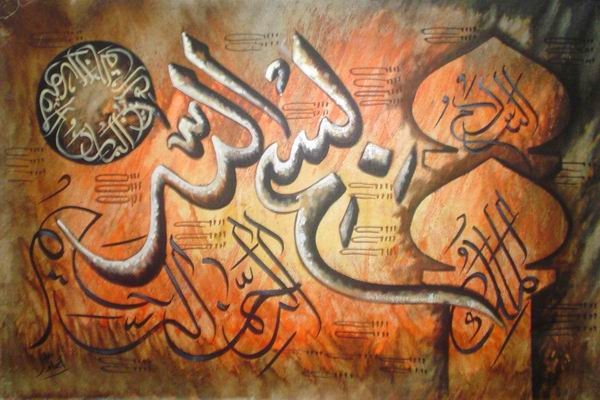The congress "The Art of the Islamic world" took place in the autumn of the last year in Krakow, and became the first scientific forum of wide international scale devoted to the Islamic art heritage and modern creativity of artists of the Muslim world.
Organizer of this important international forum in Poland was the Association of Researchers of Oriental Art with assistance of the Ministry of Culture and the Ministry for Foreign Affairs of the Polish Republic, the Museum of ethnography of the peoples of Asia and the Pacific ocean, Museum and School of the Japanese Art, Yagellonsky University, University of the name of Nicolaus Copernicus and others educational and public organizations.
Among the participants and the visitors of the congress who gathered in Krakow from many countries in which are highly developed traditions of Islamic science, the worthy place was occupied by the delegation of the scientists who are engaged in research of the fine arts and architecture of the Muslim Crimea. Into this group of lecturers entered also well-known Ukrainian and Russian archeologists who presented new materials of excavation of the Solhatsky ancient settlement, the opening connected with the monuments of the Crimean Khanate (the reports of Svetlana Belyaeva, Olena Fialko, Sergey Bocharov on the art of the XIII-XVIIIth centuries) and scientific England, Poland, Germany, Turkey (Harry Norris, Andrzey Drozd, Daniel Redlinger, Miste Hottop-Rikke, Zeynep Ertogrul, Osman Eravsar, Memet Kerem and others).
In their scientific reports they managed to reveal interesting parallels and interferences in the art of the Crimean, the Kazan, and the Polish-Lithuanian Tatars, things in common of the Tatar and the Turkish art and architecture. However the important word in the estimation of monuments of the Crimean-Tatar art and prospects of its development belonged to the Crimean-Tatar scholars, representatives of the young national creative intelligency generated already in the Post-Soviet Crimea, after returning of the Crimean Tatars to their historical Motherland.
Nuriya Akchurina-Muftieva who recently defended her thesis for the doctor's degree and wrote the fine book on the ornament in the art of the Crimean Tatars presented in her report the richest scattering of motives of the traditional twiddle spread in architecture, arts and crafts of the Crimean Tatars, in the context of that Islamic symbolic which in many respects defines the figurative maintenance of national and classical professional art.
Syncretic panorama of that high art Renaissance what underwent the Crimean Khanate from the beginning of the XVI-th century and in which were indissolubly incorporated high achievements of architecture, monumental art, theatre, poetry and other art forms, original creative decisions and fruitful influences of the Ottoman Turkey, Italy, France and the whole West European culture, designated in his research Ismail Kerimov.
Ali Hamzin who chose from the treasury of the national heritage a concrete monument – the hand-written treatise of the XIV-th century of Abu Bakr Kalandar, managed to show on this example what a dramatic destiny had art heritage of the Crimean Tatars from which much was destroyed and lost irrevocably, and what efforts are applied by the Medzhlis of the Crimean-Tatar people for rescuing of the monuments and for the revival of the national culture. The contract on scientific cooperation, signed between the Medzhlis of the Crimean-Tatar people and the Institute of Oriental Studies of the Academy of Sciences of the Republic of Uzbekistan, led to discovery and research of such outstanding monuments as the Sufi treatise "Kalandar-name", to the plan of its full facsimile edition.
Ismet Zaatov who could not come to Krakow, sent on the congress the report devoted to the Crimean-Tatar fine arts of the XX-th century, to principles of its historical periodization.
It is pleasant to notice that among the young Crimean-Tatar scholars there was also Gayane Umerova who lives and works in Tashkent, in the Gallery of the modern art of Uzbekistan. Her report contained generalization of the newest tendencies in the development of modern Uzbek art, its creative laboratories.
The Krakow congress with all evidence has shown that those sad times when the Islamic culture was expelled from Crimea, surrounded by silence plot, gone to the past. Without the values of the Crimean-Tatar culture modern researchers do not imagine the Islamic world, and without the voice of the Crimean Tatars bringing the considerable contribution to studying, interpretation and estimation of Islamic art, solemn chorals of the international scientific congresses do not sound nowadays.
Related Links:
Opened First Crimean branch of Virtual Museum "Larichesse"
Austria Returned to Crimea Samples of Crimean Tatars' Cultural Heritage
Exhibition of young Crimean Tatar gifted children’s works is opened in Aqmesdjit
History of the capital of the Crimean Khanate – Bakhchisarai was exhibited in Kazan
"Salachiq" exhibits to be handed over to Bagchasaray reserve
First step to revive calligraphy art in Crimea
Austria Returns to Ukraine Cultural Values of the Crimean Tatars and Karaims



